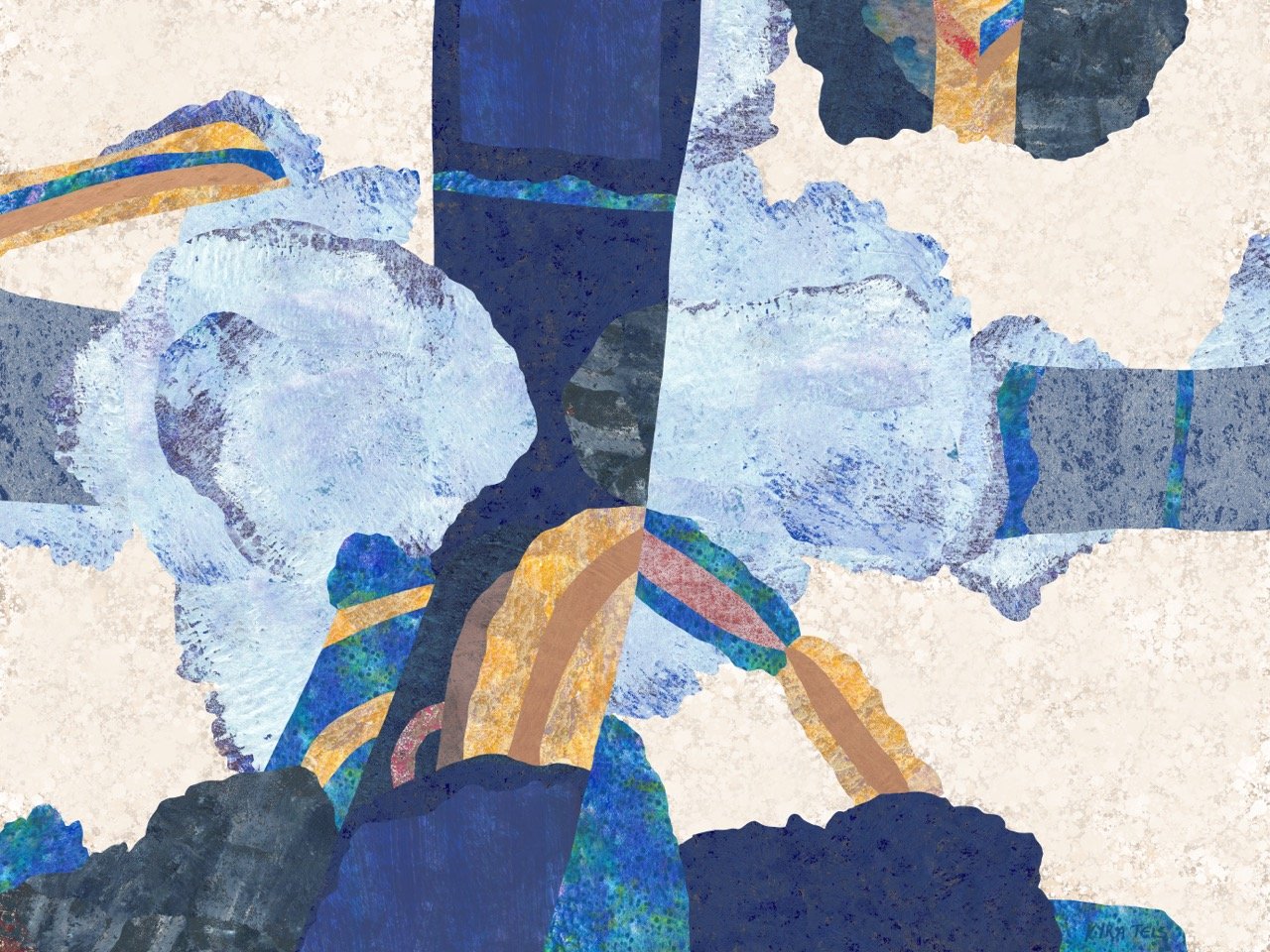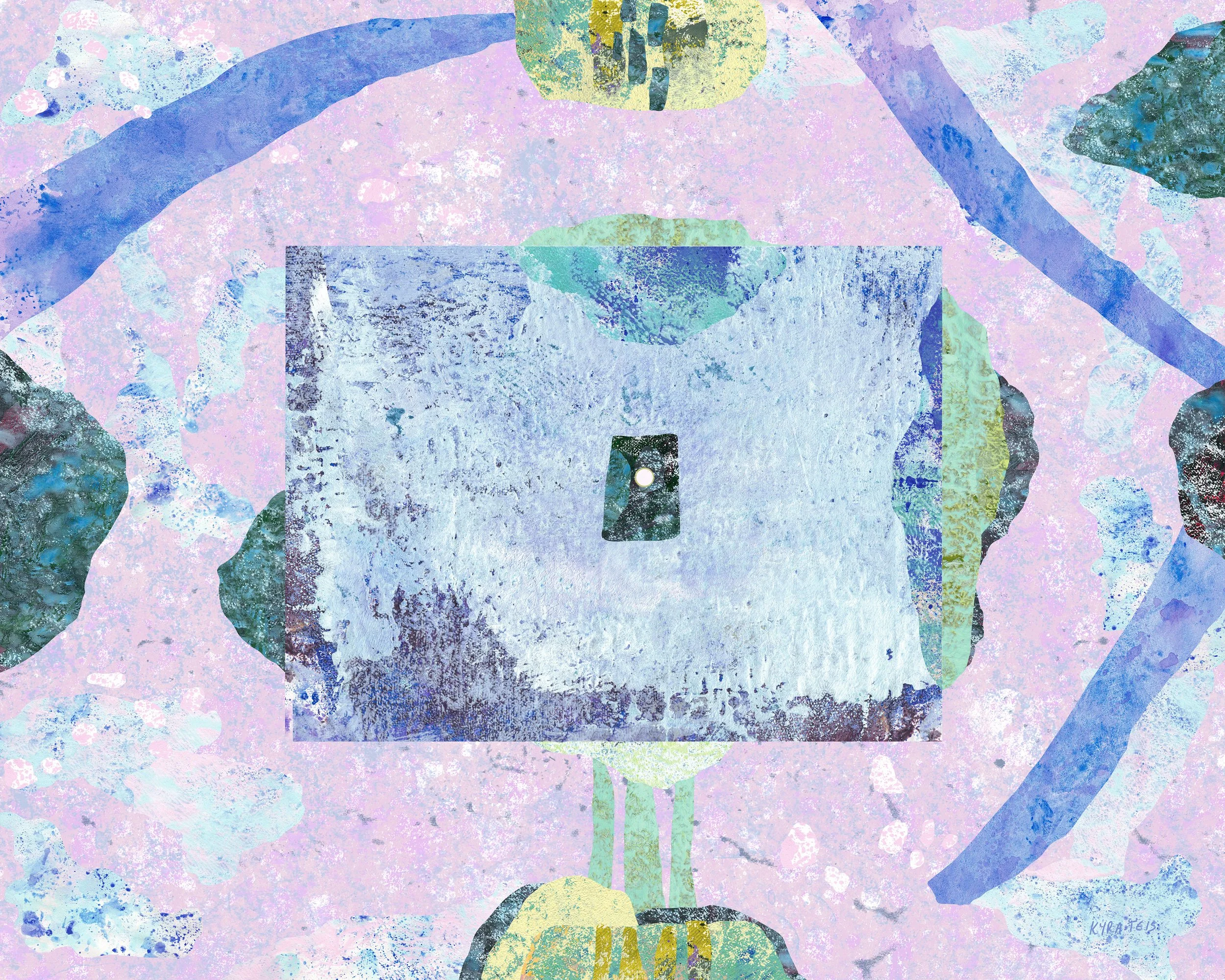Textured Harmony: Kyra’s Fusion of Handcrafted Detail and Modern Design
With a rich background in commercial illustration, Kyra has transitioned into the fine art world, bringing with her a mastery of detail, composition, and visual storytelling. Her work—digitally created yet rooted in tactile, hand-painted textures—offers a fresh and contemporary aesthetic that resonates in both residential and commercial spaces. Inspired by textile arts and Japanese kimono motifs, Kyra layers scans of hand-painted paper to create intricate, visually textured pieces that are striking at any scale. Her art invites the viewer to explore the interplay of organic and geometric elements, guiding the eye through harmonious shapes, colors, and patterns.
ARTIST STATEMENT
A longtime fixture in the illustration community, I am now developing a body of artwork for both residential and commercial venues. I am actively seeking opportunities to exhibit my work and collaborate with art buyers.
My digitally created pieces are painstakingly crafted and distinctly contemporary. By layering scans of hand-painted paper, I achieve a richly detailed, visually textured look that feels both modern and tactile. The result is striking and immersive—particularly when presented at a large scale.
INSPIRATION
My work reflects a deep interest in textile arts and Japanese kimono motifs, often blending organic and geometric elements. I focus on creating harmony between shapes and colors, guiding the viewer’s eye to follow visual relationships within a single piece or across panels in polyptych compositions.
The blotted and hand-painted textures of my source materials connect my digital creations to their handcrafted roots, bridging the gap between traditional artistry and modern techniques.
Transitioning from commercial illustration into fine art, I bring with me a background in quick-turnaround, client-focused projects—adapting ideas, responding to vision, and offering creative solutions with precision and originality.
Can you tell us about your journey as an artist? How did it all begin?
I come to abstract art recently from a long career in children’s book illustration. Illustration and abstract art may seem opposites of each other, but I think they are bound by the same thing: story. The colors, textures and energy of an abstract work of art bring the viewer into an experience, as do the materials the artist has used. My move from figurative to abstract art is a very satisfying transition because I’m exploring for the first time how these basic elements of art speak without words or pictures. In both forms, I hand-blot acrylic paint onto paper which creates amazingly complex textures and colors. Then I scan these into Photoshop, manipulate them by cutting and pasting, and layer them just as one would with paper collage. Experimenting with abstract forms has been very fun so far!
What materials or techniques do you most enjoy working with and why?
As explained above, I hand-blot acrylic paint onto paper to build up textures and colors. Then I scan these into Photoshop, manipulate them by cutting and pasting, and layer them just as one would with paper collage. People sometimes misunderstand digital art thinking the artist is one step removed from traditional media. I disagree. Photoshop is simply another tool to play with materials just like a paintbrush or palette knife is. I try to retain the “hand” in my digital art, whether I’m working on an illustration or an abstract piece. The organic textures of my blotted papers keep this connection strong.
Who or what inspires you the most as an artist?
My father was an abstract collage artist working on very large-scale canvasses. Growing up, he always made room for me in his studio giving me all the paint and paper I wanted. My mother, too, was an artist. She was a very accomplished quilter. Their artistry infuses everything I do today. I learned my paper collage technique from my father and I love to integrate quilting motifs in my abstract art.
How has your art been received by audiences and how do you respond to feedback?
So far, so good! Viewers seem to be responding well to this new development in my artistic journey. I’m not exactly starting my art career from scratch, but moving into a new market is a big job. I’m taking the experience (read: bumps and bruises) of the commercial illustration arena with me as I make new contacts and show my new work. A lot of the business side translates but the natural audience is totally different, as you can imagine. I’m used to marketing my books to families and educators. With the game shifted to art collectors and interior designers, I am recalibrating my approach and finding out what they value and need.
What are your long-term goals as an artist?
It’s funny to think about long-term goals at the beginning of a new chapter. If I were to envision my career ten years in the future…I’d like to have a handful of commercial clients who look to me as a resource for their interior design projects. I’d also love to have relationships with a few collectors who love my art and look forward to announcements of new work. It would be nice to be in collaborative friendships with both of these groups so if they were looking for a special piece, they knew I could create it for them.
How has the digital age and social media impacted your practice and reach as an artist?
As the daughter of professional artists, I am constantly taken by surprise at how the art world has changed because of social media. I grew up driving into New York with my dad, watching him pound the pavement in Soho, going from gallery to gallery with his slides. Yes, he had art consultants which still are powerful in today’s market, but his art had to be physically present in order for anyone to see it, much less buy it. My mother, too, was reliant on quilt shows to exhibit and sell her work. No one would recommend “going into art” to even the most eager young artist. It was undeniably a path into endless schlepping and low income. Not any more. Knowing what my parents went through to make things work, I’m astounded by the reach social media gives an artist today. Not that establishing oneself is easy, but it makes a career in the arts a viable possibility.
What do you hope people feel or take away when they view your art?
I hope I can help someone step outside themselves for a moment. I try to create art that has so many interesting textures and color relationships that the viewer never tires of looking at it. If a collector passes by my art everyday in their hallway or bedroom and has a sense of peace… That’s what I hope for.







